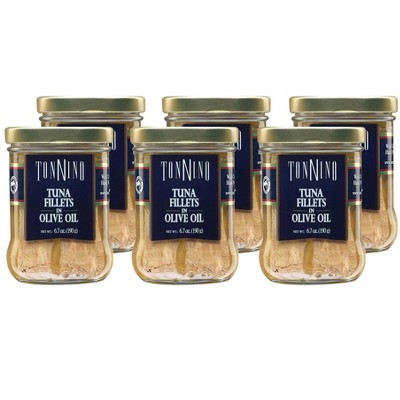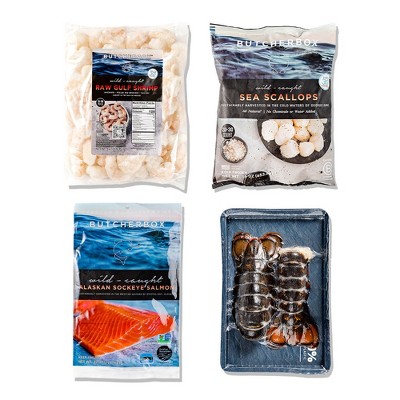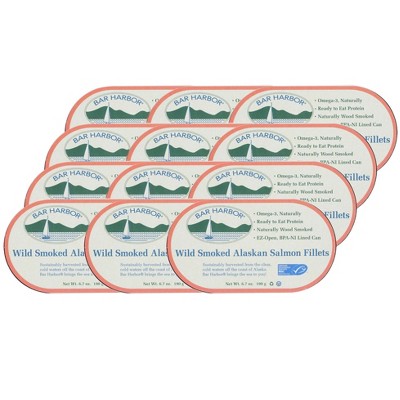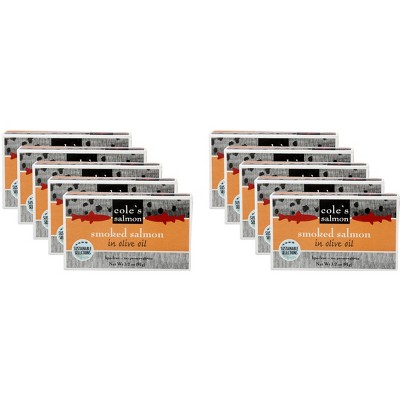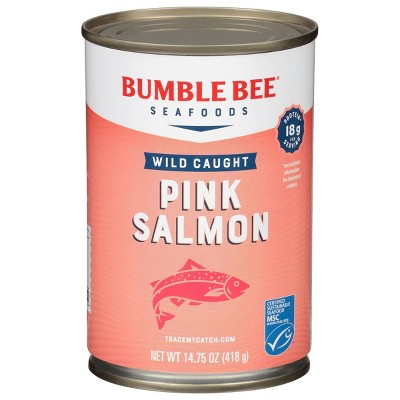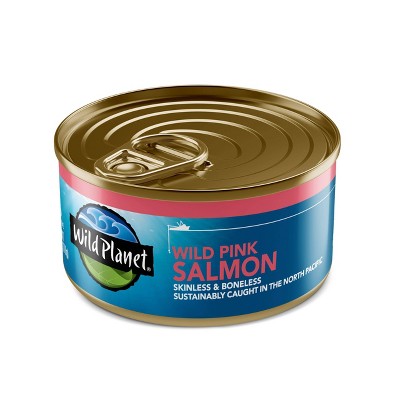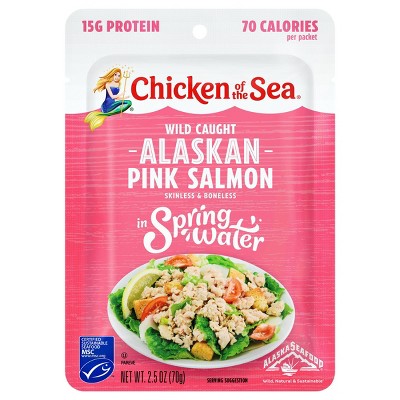Sponsored




C. Wirthy & Co. Blackened Hand-Seasoned Atlantic Salmon Fillets - Frozen - 10oz
In Stock
Sponsored
About this item
Highlights
- 10oz package
- Two premium skin-on Atlantic Salmon fillets
- Responsibly farmed-raised, BAP Certified
- Hand seasoned in blackened seasoning
- Individually vacuum-wrapped
- Cook from thawed or frozen in the oven, grill, or air fryer
- Packed with 28g of protein
- An excellent source of EPA and DHA omega-3 fatty acids
Description
Serving Size: 5 ounce
Serving Per Container: 2
Amount 5 oz (140g/About 1 Fillet) of Per serving:
Serving Size: 1 container
Amount :
Ingredients:
Allergens & Warnings:
Contains: salmon (fish)., Warning: While every effort has been made to remove bones from this product, some bones may remain. Please use caution when consuming.Shipping details
Return details
Q: Is this fish spicey? My husband can't eat real spicey food. Tkx.
A: Thank you for your interest in our C. Wirthy Blackened Salmon. While this product is not intended to be “hot” we can confirm there is pepper in the spice rub. Unfortunately, spice level is subjective to individual palate and we cannot advise if this is “too hot” for your family
submitted bySea Cuisine Rocks - 4 years agoBrand expertA: The spice itself if flavorful, but on a scale of 1-10 of Spicy Heat, I would say 3-4. This product overall is not bland and very delicious!
submitted byMelisa P - 4 years agoA: Hi! I have a very low tolerance for spicy food and though it is subjective, I can stay that I did not find it spicy at all. Instead, it was just very flavorful.
submitted byJA - 4 years agoA: I have people very sensitive to heat in my family (including myself) and we did not find this to be spicy. It just had nice blackened seasonings, but none of us felt any burning on our tongues.
submitted byAutumn - 2 years ago
Q: Can this salmon be grilled?
A: Yes, C.Wirthy salmon fillets are perfect for grilling.
submitted bySea Cuisine Rocks - 3 months agoBrand expert
Q: Is this salmon wild or farm?
A: This salmon is responsibly farm raised and BAP 4-Star certified, meaning it meets the highest level of sustainability across the entire value chain.
submitted bySea Cuisine Rocks - 3 months agoBrand expert
Q: Is a fish gluten-free?
A: No, C.Wirthy products are currently not gluten free certified.
submitted bySea Cuisine Rocks - 4 months agoBrand expert
Q: Does this contain any shellfish? I'm allergic to shellfish but not salmon?
A: C.Wirthy Atlantic Salmon items, including this product, do not contain shellfish.
submitted bySea Cuisine Rocks - 9 months agoBrand expert
Q: What would the air fryer cooking time/temp be?
A: Current packaging doesn’t have air fryer instructions, but we have new packaging coming soon that will include those! Pre heat air fryer to 350°F. Place salmon skin-side down in air fryer basket. Thawed: Bake 11-15 minutes. Frozen: Bake 17-20 minutes. NOTE: These instructions are only a guideline. Reference Air Fryer Instruction Manual.
submitted bySea Cuisine Rocks - 1 year agoBrand expert
Q: Is this Salmon skinless?
A: No, all C.Wirthy salmon products are skin-on. Salmon skin is fully edible, can have high concentrations of Omega-3 fatty acid, and is great for grilling! If you do not wish to consume the skin, the salmon should separate easily from the skin after cooking according to the package directions.
submitted bySea Cuisine Rocks - 1 year agoBrand expert
Q: Is this salmon farm raised or wild caught, or a hybrid of the two? I do not see the word wild, just "ocean raised." What does this mean?
A: Our C.Wirthy Salmon is responsibly farmed-raised in Chile in ASC certified fisheries, many of which are located directly in the ocean. The fish farmers and their processing plants are systematically audited by High Liner Foods, C Wirthy’s parent company, before they can become a supplier to ensure they are meeting our sustainability standards. Sustainable seafood continues to be among the highest priorities for High Liner Foods as we look to feed a growing world population now and in the future. The strict criteria we use to define responsibly source wild-caught and farmed seafood is based on various certification schemes the Global Seafood Sustainability Initiative (GSSI) and industry experts assure will protect the integrity of the species, stock and environment.
submitted bySea Cuisine Rocks - 2 years agoBrand expert
Q: Can the salmon fillets be microwaved?
A: Yes, according to the instructions, the fillets can be microwaved once thawed; the internal temperature should reach 165 °F. Full instructions are on the back of the package.
submitted byholud - 2 years ago
Q: trying to find out if this is wild caught as I will not eat farm-raised junk
A: They describe it as "ocean-raised in the natural fjords of Chile," so it farm-raised.
submitted byholud - 2 years ago

